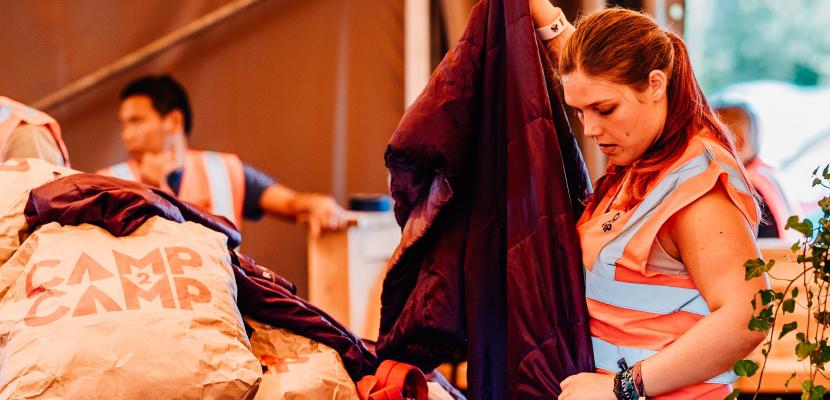
Camp2Camp

About this good practice
Camp2Camp started by collecting tents that were left behind at large festivals upon closing. After a good cleaning, they may be reused and rented out the year after, in this way preventing festivalgoers to buy new, cheap equipment and again leave it behind. However, a lot of the abandoned materials were in such bad shape that reuse was impossible. That’s why Camp2Camp also started upcycling the camping gear. For instance, the tent canvasses are turned into crafting aprons for toddlers. Furthermore, not only camping gear is left behind. This prompted one of the volunteers to turn abandoned beer into a liquor (Beer2Booz).
Bringing sustainability to the festival will have an impact on the way participants look at the throwaway society. When confronted with the fact that they can rent tents that were abandoned, festivalgoers will not only see the financial benefit of rented tents but also the practical one, because they don’t have to carry the tents to the festival and back home.
The core goal is social sustainability as Camp2Camp employs adolescents that are removed from the job market or can’t find their way in society, the so-called NEET-youngsters (Not in Employment, Education or Training). Secondly, many sleeping bags are donated to the homeless, and schools and other youth organizations can rent the camping equipment at an affordable price. Furthermore, tents are also lent to non-profit organizations and families.
Resources needed
Annual working costs: +- 300.000 Euro. Yearly, 10 full-time employees and 20-30 volunteers. In addition, 40 employees through holiday job contracts and 200 volunteers during festival season.
Evidence of success
Camp2Camp rents around 12.000 products (4.000 sleeping bags, 2.000 air mattresses, 2.000 tents, and 4.000 festival chairs) every summer to about 3500 festivalgoers. Thanks to this success, they can employ 5 to 10 adolescents year-round.
Potential for learning or transfer
Festivals are organised all over the world and they share many of the challenges regarding tents and camping equipment that are left behind. Collecting everything costs merely manpower and thus the circular practice is, therefore, easily adaptable in other regions. The key will be to have the know-how of upcycling abandoned materials and to repair and/or transform the materials properly to prolong the life-cycle and to give them a second life with further purpose.
Further information
Good practice owner
You can contact the good practice owner below for more detailed information.
